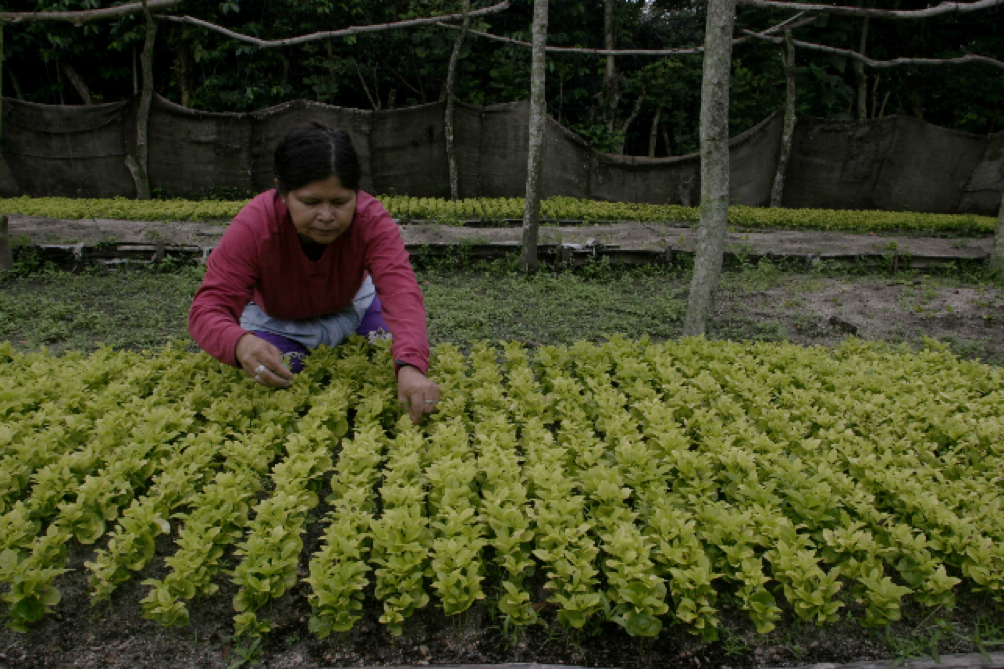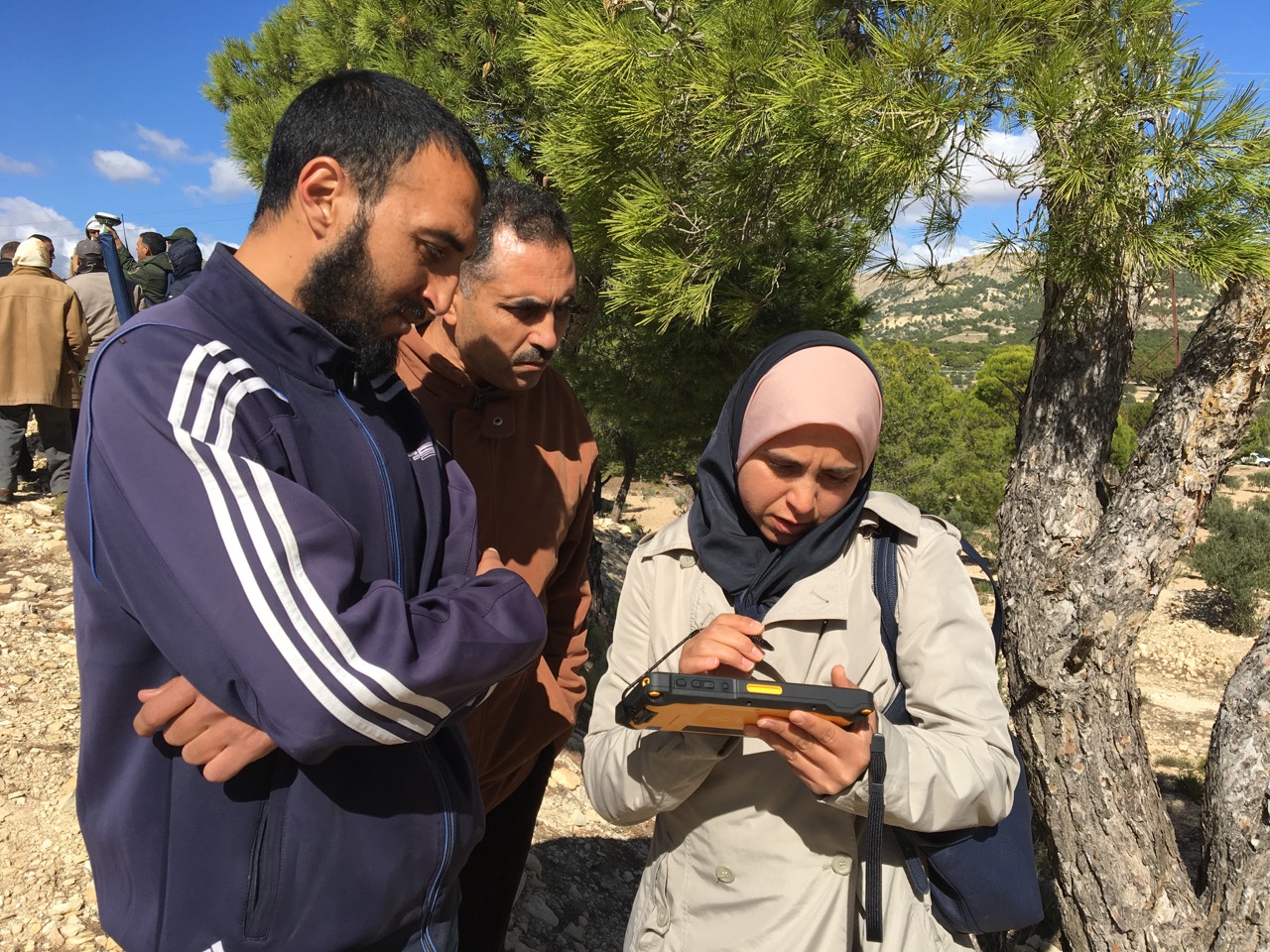A forestry officer in Tunisia gathers data on forest tenure rights in Siliana Governorate
Have you attended a REDD+ workshop where there were only a few women in the room and where the discussion was dominated by men? Have you driven through a forested rural area and seen women carrying fuelwood or forest foods? These experiences demonstrate a stark disconnect between women’s lack of participation in consultations and decision-making on REDD+, in relation to their deep knowledge and high dependence on forest resources. In most countries there are political, social, economic, and cultural barriers that prevent women from being fully engaged in forest management and decision-making. The lack of full participation of women is not only unfair, it is also a missed opportunity to benefit from women’s contribution to REDD+.
It is now widely acknowledged that integrating a gender approach is a key element for successful implementation of climate action, including REDD+. There is also growing recognition that more concrete efforts are needed to identify gender gaps and undertake gender-responsive action to address them. In this vein, the UNFCCC Gender Action Plan (GAP) launched in Bonn last year could be a crucial turning point that represents an important step in accelerating the achievement of gender-responsive climate action within countries.
This plan recognises the ‘need for gender mainstreaming through all relevant targets and goals in activities under the Convention’ and ‘invites’ Parties to engage in implementing the GAP. But what does this entail and what does it mean for countries pursuing a national REDD+ programme?
Since countries are at different stages and face diverse gender-related challenges, each country is expected to develop an appropriate strategy on gender to fit its own context. For example, countries may decide to first conduct a gender analysis or a roadmap in the context of REDD+ to identify gaps, opportunities, and strategies that may be integrated in national REDD+ processes. For example, Ghana, Sri Lanka and Vietnam have conducted such studies. Others may undertake participatory stakeholder engagement processes, such as what was done in Panama, to learn about the current situation of women in REDD+ communities, as well as seek their perspectives on effective measures within a national REDD+ strategy. The success of the GAP depends on how well countries integrate gender within their climate action plans, including REDD+.

Similar to, and in line with the work streams of the UN-REDD Gender Approach, the GAP focuses on the following five priority areas:
Capacity-building, knowledge sharing and communication
Gender-responsive policies, programmes, education, training, and public awareness from national to local level is of importance. For instance, countries may need to integrate gender considerations into REDD+ policies to ensure that both women and men benefit from REDD+ action and undertake specific strategies to ensure effective engagement of women in REDD+.
Gender balance, participation and women’s leadership
This second area on gender balance reiterates the importance of targeting women for learning opportunities, including exchanges and secondments, as well as decision-making processes and bodies. This includes developing skills in leadership, negotiation, facilitation and chairing of meetings. Countries may want to consider the steps that should be taken to prepare women for leadership roles in the REDD+ arena, including at local, national and international levels.
Coherence (within the UNFCCC bodies)
Some women who benefit from the above may eventually take on roles in UNFCCC bodies, thereby working towards meeting the goal of gender balance within these bodies.
Gender responsive implementation and means of implementation
This priority area mentions the integration of gender, including gender-responsive budgeting, into financial commitments to implement climate action, which includes REDD+. International financing mechanisms, such as the Green Climate Fund, call for attention to gender issues in GCF-funded projects. Thus, countries designing REDD+ investment plans, projects and programmes will increasingly need to address these concerns in order to obtain financing. It is then critical to ensure that adequate funding is funneled down and allocated effectively to support gender-responsive REDD+ action at national and local levels.
Monitoring and reporting
This final priority area focuses on monitoring and reporting as well as calls for countries to collect sex-disaggregated data while undertaking a gender analysis. To achieve this, countries may analyse the different social, economic and political conditions that affect both women and men in terms of REDD+. They also need to identify potential opportunities, barriers and risks associated with REDD+ processes. Monitoring and reporting on gender creates an accountability mechanism since defining indicators and responsibilities for tracking progress makes it more likely that issues will be addressed.
Undertaking gender-responsive REDD+ action can help fulfill multiple priority areas of the UNFCCC GAP. It can also help to ensure that women, men and youth participate equitably in and benefit from REDD+, which would create a win-win scenario for communities, governments and the environment.
The UN-REDD Programme is committed to help countries that wish to advance in this important area and houses expertise on gender and REDD+. For further information, please contact Elizabeth Eggerts.


